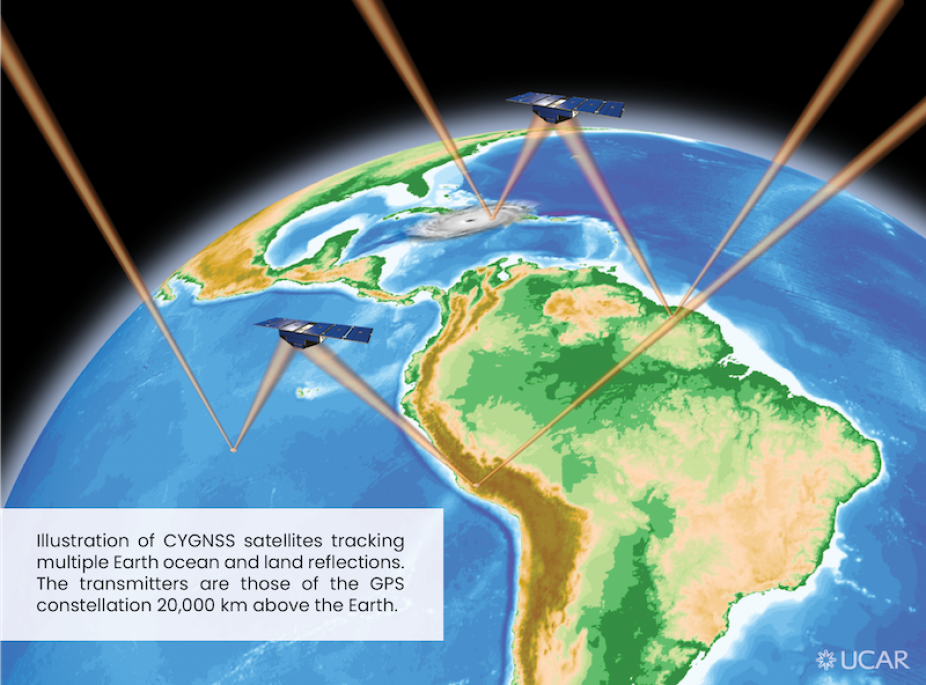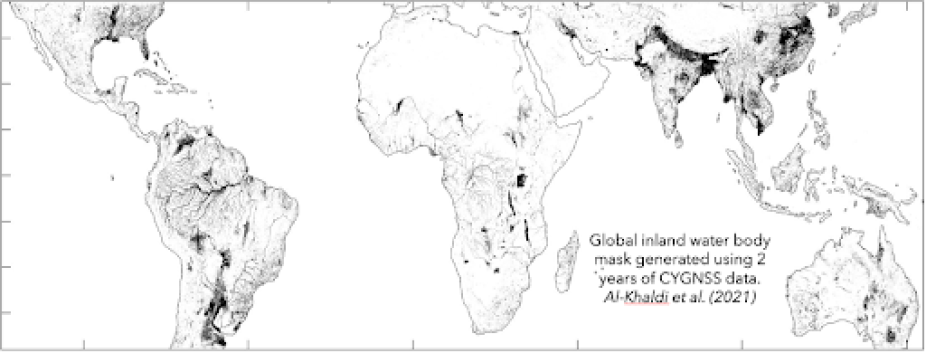GNSS Reflectometry
Global Navigation Satellite System Reflectometry (GNSS-R)
The COSMIC program has most often been associated with the GNSS-Radio Occultation technique. However, COSMIC also conducts research in spaceborne GNSS-Reflectometry (GNSS-R).
GNSS-R is a satellite remote sensing technique that uses surface-reflected GNSS signals to infer information about the Earth’s surface. The reflected GNSS signals act as a bistatic remote sensing radar that responds to changing surface conditions.
Reflected GNSS signals can be received onboard a low Earth orbiting satellite and used to estimate environmental conditions over the ocean, land, and sea ice.

Much of COSMIC’s GNSS-R research uses data from NASA’s Cyclone GNSS (CYGNSS) mission, which is a constellation of eight small GNSS-R receivers that are orbiting the tropics.
CYGNSS was designed to retrieve wind speed over the ocean during hurricanes and tropical storms. However, the data are also sensitive to both near-surface soil moisture and flood inundation extent over land.
Researchers in COSMIC are developing retrieval algorithms, calibrating the data, and designing new GNSS-R receivers to expand the use of GNSS-R as a burgeoning remote sensing technique.


Constellation Observing System for Meteorology, Ionosphere and Climate (COSMIC) revisions for: https://dev-cosmic-unity.pantheonsite.io/what-we-do/gnss-reflectometry